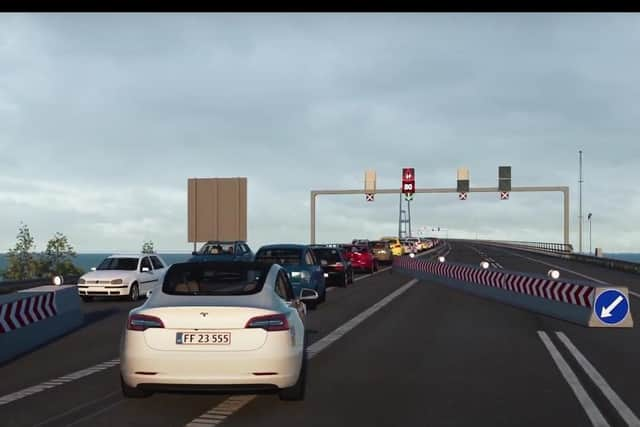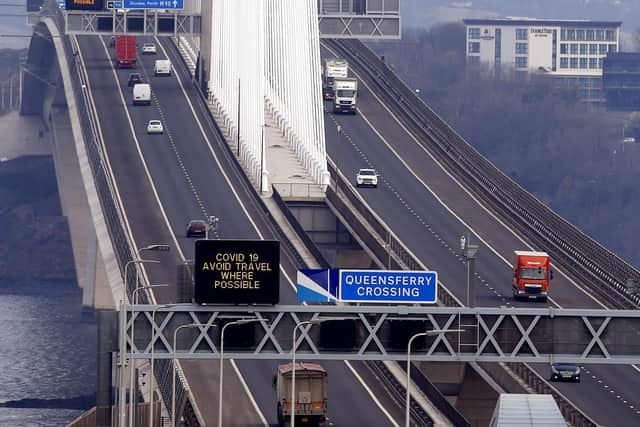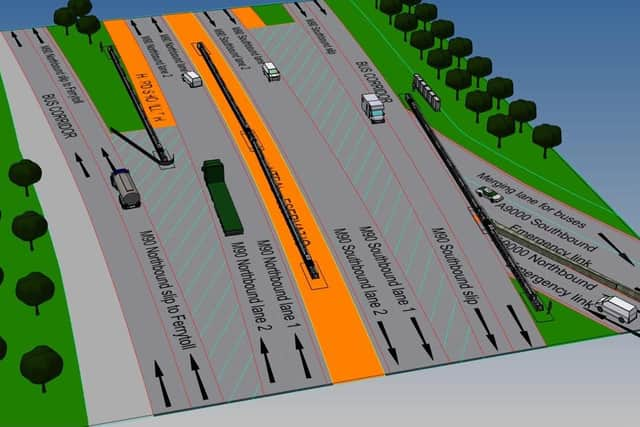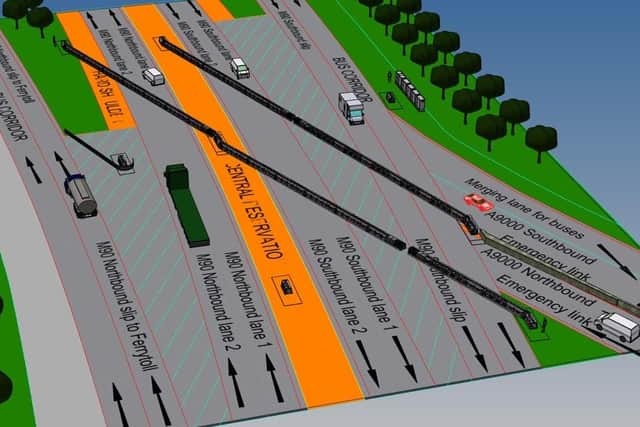Automated movable barriers to speed up Queensferry Crossing ice diversions
and live on Freeview channel 276
They are expected to significantly cut the current five hours required to switch vehicles from one bridge to another.
The barriers can to be moved across the carriageways in five minutes, although more time would be required to complete the traffic diversion.
Advertisement
Hide AdAdvertisement
Hide AdNews of the innovation came as bridge operator BEAR Scotland said it would clean all the Queensferry Crossing’s cables as the next step to mitigate the ice risk following the successful trial of a remotely-controlled pressure jet on part of the bridge in November.
The £1.35 billion bridge, which opened in 2017, has been closed three times by falling ice, the last one in January 2021.
It is caused by a unique rapid-build-up-then-fall problem which produces "ice bombs" when a specific combination of weather factors occur, including temperature and humidity.
Bridges manager Chris Tracey told a Cold Comfort Scotland winter maintenance conference: "The automated barriers in normal running will sit in the central reserve and verges, and can be automatically opened up within five minutes to form a natural diversion route.


Advertisement
Hide AdAdvertisement
Hide Ad"We still have the original crossovers from Queensferry [Crossing] onto the Forth Road Bridge north and south, but they are not designed in such a way that you can just open them and let traffic run.
"The best we have done so far is five hours to get these open and running.”
He later added: “We’ve already started procuring components for the automated barrier system.
"The target is to have at least the north side operational by the end of the year.


Advertisement
Hide AdAdvertisement
Hide Ad"However, there are some challenges due to the global shortage of key electronic components, and design issues associated with foundations being located near an Ineos oil pipeline at the south side.
“Although these barriers can be opened in five minutes, it will take longer than this to fully divert traffic due to the traffic management required on the approaches.
Mr Tracey told Scotland on Sunday: "I can also confirm that all the cables on the Queensferry Crossing will be cleaned before next winter, using the machine that was trialled last November, so no need for [staff] rope access this time.
"Cables pressure-jetted by machine performed better in ice accretion tests than manually-cleaned stays.”


Advertisement
Hide AdAdvertisement
Hide AdThe IAM RoadSmart motoring group said it remained to be seen how efficiently the new system would work.
Neil Greig, its Scotland-based policy and research director, said: "We have been saying for years that the old Forth Road Bridge is the most obvious diversion for the ice-bound Queensferry crossing, so this development is welcome.
"However, the devil will be in the detail of the traffic management set up to ensure drivers can safely and quickly understand and negotiate any changes in road layout.
"It is also a pity that money has had to be spent on a set of fancy movable barriers when the ice problem should have been resolved at the design stage of the new bridge.
Advertisement
Hide AdAdvertisement
Hide Ad"Thousands of pounds spent on this system would have been better spent on fixing potholes which plague Scottish drivers every day.”
A message from the Editor:


Thank you for reading this article.
We're more reliant on your support than ever as the shift in consumer habits brought about by coronavirus impacts our advertisers.
If you haven't already, please consider supporting our trusted, fact-checked journalism by taking out a digital subscription.
Comment Guidelines
National World encourages reader discussion on our stories. User feedback, insights and back-and-forth exchanges add a rich layer of context to reporting. Please review our Community Guidelines before commenting.
